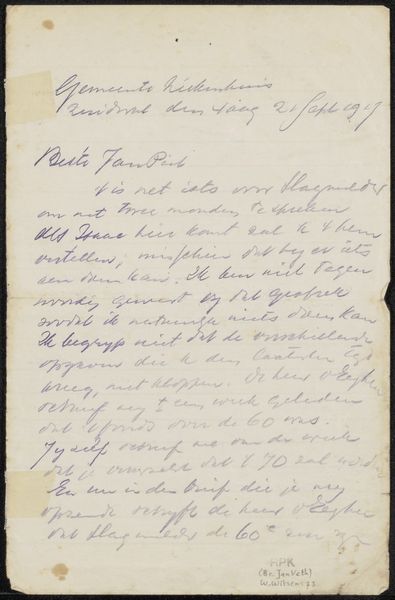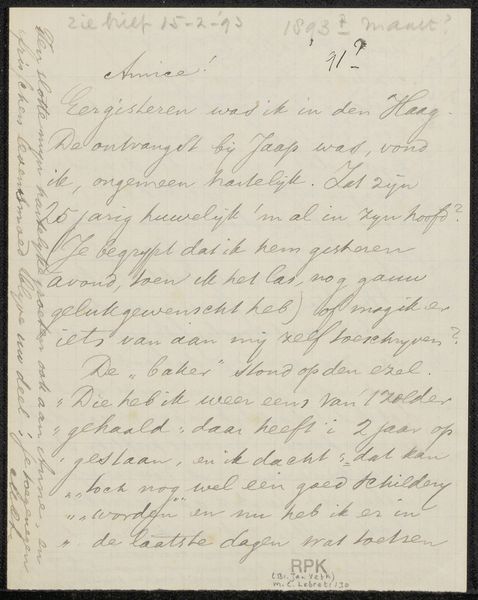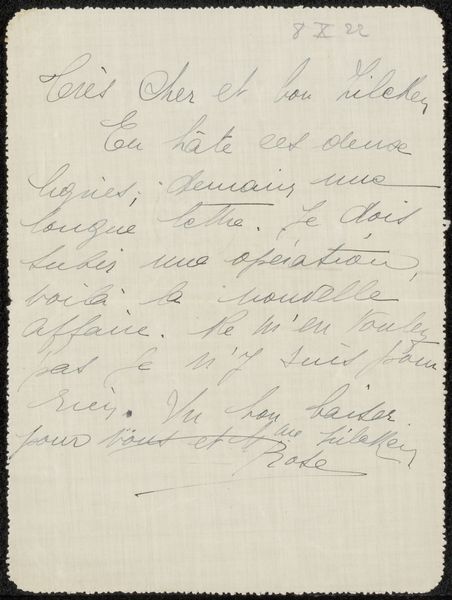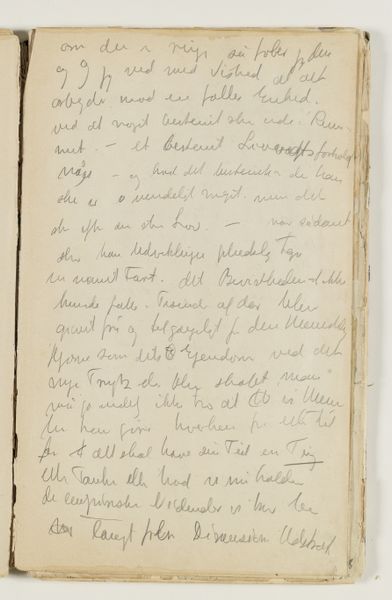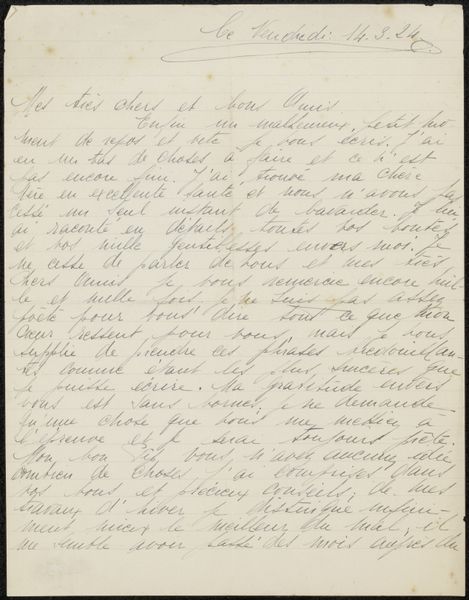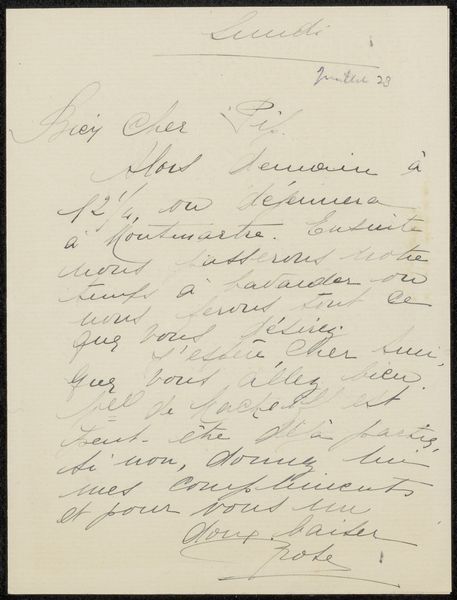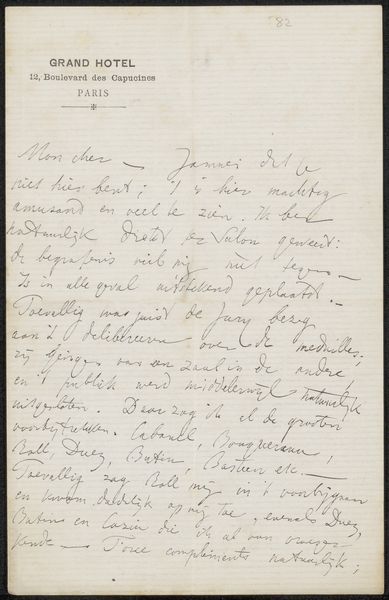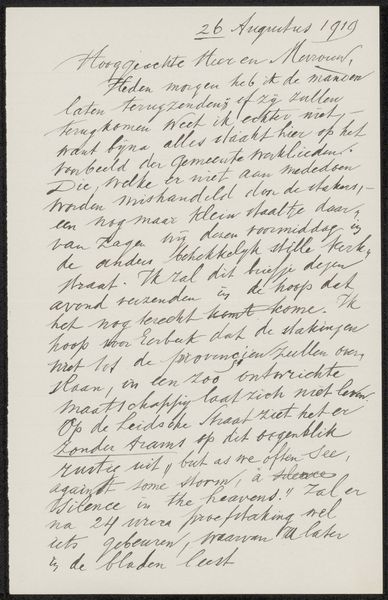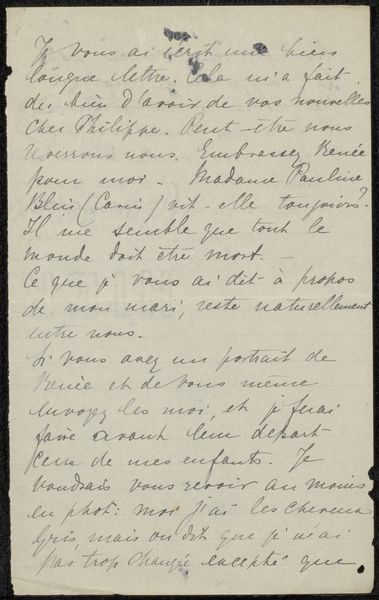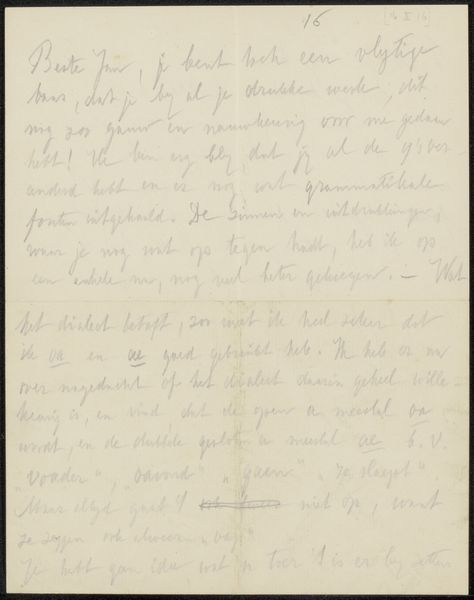
drawing, paper, ink
#
drawing
#
paper
#
personal sketchbook
#
ink
#
modernism
Copyright: Rijks Museum: Open Domain
Editor: Here we have Henriëtte Roland Holst-van der Schalk's "Brief aan Willem Bogtman," thought to be from around 1943 to 1945. It's an ink drawing on paper – looks like a personal letter. The handwriting gives it such an intimate feel, like you’re intruding on something private. How do you interpret this work? Curator: This piece speaks volumes about the power of personal connection during times of upheaval. Think about the context: potentially wartime, the artist communicating with a friend. Letters become lifelines, don't they? A tangible resistance against isolation. How does the medium—ink on paper—contribute to this sense of intimacy and immediacy, considering the socio-political constraints of the period? Editor: Well, ink feels so permanent, and on paper… it's a delicate combination, right? Both archival and fragile. This was written in 1943. Did Holland already find itself at war? It must have been such a fragile period of time to live in. Curator: Absolutely. Roland Holst-van der Schalk was known for her socialist and pacifist beliefs. The simple act of writing, preserving thoughts and feelings, was in many ways, in itself an act of resistance against the dehumanizing forces around them. Editor: It makes you wonder what the content of the letter must have been like. Knowing it went to such a prominent friend like Willem, it would surely have addressed a lot. What were they struggling with? Curator: Exactly! It brings forward issues of communication under duress, the survival of thought. Editor: That really shifts my perspective. I initially saw just a personal letter, but it’s layered with a quiet defiance and a deeply human need for connection. Curator: Precisely. By examining art through this lens, we unearth stories of resilience and resistance woven into the very fabric of everyday life.
Comments
No comments
Be the first to comment and join the conversation on the ultimate creative platform.
